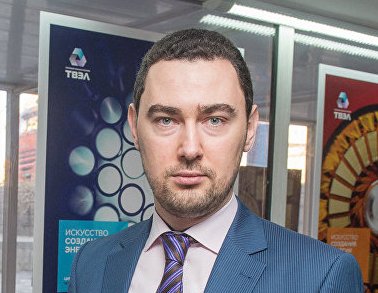


ArmInfo. Next stage of development of alternative energy starts including small hydropower engineering. In particular, it is necessary to build more than 30 objects. Meanwhile, issues related to the use of certain technologies of mini hydropower plants construction are relevant for the country. On what the Russian state corporation "Rosatom" can offer to Armenia, the economic analyst of ArmInfo Alexandre Avanesov spoke to Deputy Director of Rosatom Eastern Europe LLC Vladimir Gorn. LLC on what the Russian state corporation of "Rosatom" could offer to Armenia . "Rosatom Eastern Europe" is responsible for the promotion of products and services of the enterprises of the State Corporation Rosatom in the region.
Mr. Gorn, why did Rosatom start developing and promoting a mini hydropower plant?
The matter is that "Rosatom" is engaged not only in the development of nuclear power, but also other energy areas, including hydro and wind power. In other words, we are talking about different types of carbon-free energy. Due to a number of factors, we believe that small hydropower is a promising direction for sustainable development. Mini hydro power plant is produced by the Hungarian enterprise Ganz EEG Kft., Which is part of the machine building division of the State Corporation Rosatom. Ganz EEG Kft was established in 2008 and continues the activities of the legendary Ganz factory, which in 1866 produced the first turbine for hydropower, and in 1881 delivered the first products for export.
By the way, the concept of Niagara Falls power plant was also developed at the Ganz plant. Today Ganz EEG Kft also produces pumps for nuclear power plants. Therefore, we are confident that the production of our mini hydropower plants is in the hands of top-class specialists. What could Rosatom offer for the successful implementation of the hydropower development program in Armenia?
We have different options. This can be equipment for traditional HPPs (turbines, generators, control systems), and the mini HPP of the container type I mentioned. Such a station can meet the needs of the population and industry for electricity in areas where there is no central power supply, and can also serve as an alternative to the use of uneconomical and non-ecological electricity sources, such as diesel generators.
The station is a turbine and a set of auxiliary equipment, which are housed in two standard containers.
One of the conditions for successful mini hydropower plant operation is the presence of mountain rivers that are capable of providing a sufficient head of water: a drop of about 60 m at a volume of 1 kb m / s. The landscape of Armenia allows to use such equipment effectively. Mini HPP of container type has a number of advantages in comparison with the traditional mini HPP, including a significant reduction in costs for construction and installation work (2 - 2.5 times lower), which saves up to 30% of the project cost and, as a consequence, Cost of electricity produced. Recently we had meetings with representatives of your republic at the congress on hydropower in Tbilisi. Tell me, please, about the advantages of a mini hydropower plant? As I have already noted, the cost of construction and installation works for mini-HPPs is approximately 2 to 2.5 times lower compared to traditional HPPs. According to preliminary estimates, the payback of the mini HPP is about three and a half years with the utilization factor of the installed capacity up to 93%.
Other advantages of mini-HPP include compactness of equipment, fast delivery times, minimal construction work required for site preparation, and simple and fast installation. After transporting the mini HPP in the container to the location and connection to the power grid, electricity generation can be started within a month.
The compact equipment has all the necessary devices that are needed for the operation and management of mini hydroelectric power plants. The battery in the complex, in the event of a turbine stop, provides power to control the system and allows the owner to transmit information about the operation of the system via satellite to the control center. If there is no connection to the electrical network, the diesel generator provides the necessary electric power to start the system. An important factor, in my opinion, is the autonomy of the mini-HPP. The station is controlled remotely, via satellite, cellular communication or the Internet and does not require direct participation of specialists on the ground. Thus, the owner of the equipment with the help of a control system gets the opportunity to control the station through his computer, tablet, or mobile phone, for which he can receive information on the amount of electricity produced.
And what countries does Rosatom consider as potential markets?
First of all, these are the countries of Transcaucasia, Central and South Africa, South and South-East Asia, Eastern Europe, Latin America, CIS countries. In the next 10-15 years, we expect to implement projects in the field of small hydropower with an aggregate capacity of 200 to 300 megawatts. At the end of 2016, our first mini-HPP container type was acquired by the Georgian company International Energy Company, which is developing the hydropower sector in the region. The company plans to implement a pilot station, the delivery of which will take place this year, and then deploy a few more mini hydropower plants. We read that our partnership is not limited to the nuclear industry and will develop in other areas, in particular in the field of hydropower.